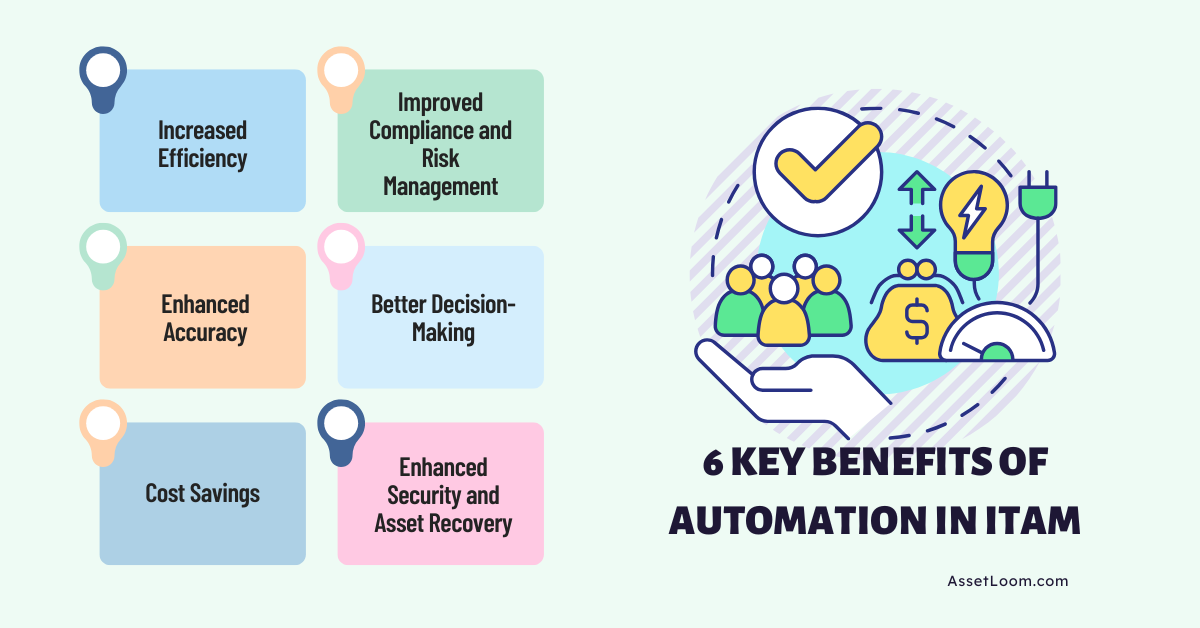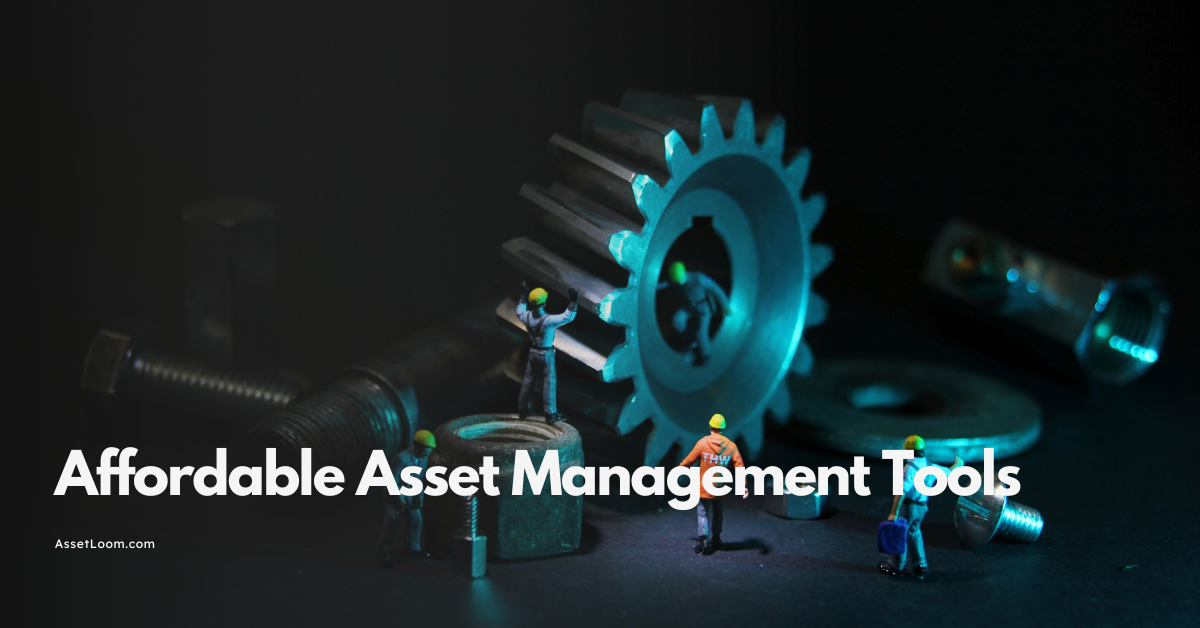Automation in ITAM: Key Benefits and 2025 Trends
Automation eliminates these issues, improving accuracy, saving time, and ultimately ensuring that your assets are being used in the most effective and cost-efficient way possible.
Managing IT assets can quickly become a juggling act for IT managers, directors, and CTOs. From keeping track of hardware and software to staying on top of compliance and vendor contracts, it’s a lot to handle; especially as businesses scale.
This is where IT Asset Management (ITAM) automation comes in. By automating routine tasks, IT teams can free up time, reduce errors, and gain clearer insights into asset usage. The result? More efficiency, fewer headaches, and even cost savings.
Looking ahead to 2025, technologies like AI, cloud solutions, and predictive analytics are poised to make ITAM even smarter and more streamlined. In this post, we’ll dive into the key benefits of automating ITAM now, and we’ll also explore the trends that are shaping its future. Whether you’re already using automation or just thinking about it, this guide will help you stay ahead of the curve and make smarter decisions for your IT operations.
What is Automation in ITAM? And Why It Matters
Automation in IT Asset Management (ITAM) refers to using software tools and technologies to manage, track, and optimize the lifecycle of IT assets without manual intervention. This involves automating tasks like asset discovery, inventory updates, license management, compliance tracking, and generating reports. Instead of relying on manual entries or spreadsheets, automation streamlines the entire process, ensuring that everything is accurately recorded and updated in real-time.
For example, automated ITAM systems can instantly detect when a new device is added to the network, update its status, and ensure it’s properly registered. They can also track software licenses, alert teams when renewals are due, and automatically generate reports for audits. Essentially, automation takes care of the tedious tasks that used to consume hours of your team’s time, freeing them up to focus on more strategic activities.
Why does this matter? As businesses grow and technology becomes more complex, managing IT assets manually can become time-consuming, inefficient, and prone to mistakes. Automation eliminates these issues, improving accuracy, saving time, and ultimately ensuring that your assets are being used in the most effective and cost-efficient way possible.
Key Benefits of Automating ITAM
Automating IT Asset Management (ITAM) brings a host of immediate benefits that can transform the way your IT department operates. Whether you're looking to save time, reduce errors, or make smarter decisions, automation can make a significant impact. Here’s a look at some of the key advantages:

1. Increased Efficiency
We’ve all been there, endless hours spent manually tracking assets, updating spreadsheets, and trying to stay on top of every little detail. It’s tedious, it’s time-consuming, and it takes up a lot of your team's energy. Automation takes all that off your plate.
Instead of juggling different systems and constantly checking for updates, an automated ITAM system handles it all behind the scenes. From updating your asset inventory to notifying you when something’s about to expire, everything gets taken care of in real time.
For example, automated systems can instantly update your inventory when an asset is added or removed, so you don’t have to worry about keeping track of everything manually. This leaves your team with more time to tackle strategic initiatives or solve complex IT challenges.
The Result: Less time spent on repetitive tasks and more focus on the bigger picture. Your team can now channel their energy into projects that matter, not paperwork.
2. Enhanced Accuracy
The more manual work you have, the greater the chance for human error. Automation eliminates this risk by ensuring that every asset is tracked consistently and accurately. Whether it’s updating asset statuses or generating compliance reports, automated systems ensure that data is correct and up-to-date every time.
Think about the last time a mistake slipped through the cracks—perhaps a missed license renewal or an unreported asset change. Automation helps prevent those mistakes by handling the tasks with precision, so your team doesn’t have to worry about small details falling through the cracks.
With Automation, you can trust that your asset data is always accurate. No more wondering if you’ve missed something critical. Automation helps prevent errors before they even happen.
3. Cost Savings
Who doesn’t want to save money? One of the best ways automation can impact your organization is by reducing unnecessary costs. Whether it's eliminating underused software licenses, preventing duplicate purchases, or optimizing asset usage, automation makes sure you’re only paying for what you actually need.Therefore, you’re making smarter, data-driven decisions about your assets, ensuring you’re only spending on what’s actually necessary.
For example, if you notice that a certain software license is rarely used, you can remove it or consolidate licenses across the company to avoid paying for unused resources. Automation helps uncover these opportunities for savings that would otherwise go unnoticed.
4. Improved Compliance and Risk Management
Staying on top of compliance can feel like a full-time job, especially with ever-changing regulations and software licensing rules. The good news? Automation helps you keep everything in check. From keeping track of license renewals to ensuring you’re meeting industry standards, automation handles the compliance tasks that can often slip through the cracks.
Whether it's ensuring software licenses are up to date or making sure you’re in line with industry regulations, automation provides the peace of mind that your IT operations are always compliant. No more scrambling before audits or fearing accidental oversights.
5. Better Decision-Making
When your IT assets are properly tracked and organized, it becomes much easier to make data-driven decisions. Automation gives you access to real-time data and insights into how assets are being used, where costs are being incurred, and which assets are underperforming. This means you can make smarter decisions about things like asset allocation, budgeting, and future technology investments.
For instance, you can identify trends in asset usage such as which devices are overused or underused and make adjustments accordingly. This helps optimize resource allocation and ensures your company’s IT investments are aligned with business goals.
6. Enhanced Security and Asset Recovery
Automation isn’t just about saving time or money, it also plays a crucial role in protecting your company’s sensitive information. When you retire old devices or phase out equipment, it’s vital to ensure that data is wiped and that assets are properly disposed of. Automation helps you stay on top of this process, ensuring that security protocols are followed every step of the way.
Example: When your company replaces an old laptop, it’s essential to erase any sensitive data before it leaves your organization. An automated system can flag devices that are due for retirement and ensure that proper procedures are followed, including wiping data and securely disposing of the hardware.
Better security and fewer risks of data breaches. Automation ensures your company’s assets are handled securely and in compliance with data protection standards.
As you can see, the benefits of automating ITAM are far-reaching. From saving time and reducing errors to making smarter decisions and enhancing security, automation brings tangible improvements to how IT departments manage their assets. It’s not just about efficiency—it’s about creating a smarter, more strategic approach to IT management.
By automating these critical processes, your team can focus on what really matters, aligning technology with business goals, driving innovation, and keeping operations running smoothly.
=> Application Management in the Age of AI and Automation
The Ways ITAM Automation Supports Your Business Growth
IT Asset Management (ITAM) automation is more than a time-saver. It’s a key driver for business growth. As your company expands, the complexity of managing IT assets increases, but automation keeps everything streamlined and efficient. Here’s how ITAM automation supports your growth:
- Scaling Without Extra Headcount
As your business grows, automation ensures you can manage increasing assets without hiring additional staff. The system adapts to handle more assets in real-time, keeping things efficient no matter how large your organization gets.
- Seamless Integration with Other Systems
Automation integrates with your procurement, finance, and HR systems, ensuring all departments are on the same page. This streamlines workflows, reduces errors, and speeds up decision-making.
- Real-Time Visibility Across Locations
Whether your team is in the office or working remotely, automation provides real-time visibility into where your assets are, who’s using them, and their status, giving you full control no matter the location.
- Streamlined Vendor and Contract Management
Automation tracks vendor contracts, renewals, and warranties, sending timely reminders and storing contract details in one place, ensuring you never miss a deadline and always get the best deal.
ITAM automation plays a pivotal role in supporting business growth. By enabling you to scale without adding extra headcount, integrating seamlessly with other business systems, providing real-time visibility across multiple locations, and streamlining vendor management, automation helps ensure that your IT operations stay efficient as your company grows. It’s a powerful tool that keeps you organized, reduces costs, and improves decision-making so you can focus on what truly matters: driving growth and innovation.
The Future of ITAM Automation: 2025 Trends to Watch
Looking ahead to 2025, IT Asset Management (ITAM) automation is set to become even more intelligent and adaptive. Emerging technologies, like AI, machine learning, IoT, and cloud-based solutions, are pushing ITAM to evolve into a smarter, more predictive system that not only tracks assets but anticipates issues and drives proactive decisions. Here’s what to expect in the near future:
1. AI and Machine Learning: Predicting Needs Before They Arise
Artificial intelligence and machine learning are transforming the way we manage IT assets. In the near future, these technologies will provide predictive insights, allowing IT teams to anticipate when assets are nearing the end of their life cycle, need maintenance, or will require a software update. By analyzing historical usage data, AI can predict failure rates, usage trends, and maintenance needs, enabling IT managers to make proactive decisions.
Example: Imagine your organization uses a fleet of laptops. Instead of waiting for a device to break down, an AI-driven ITAM system could predict when a battery or hard drive is likely to fail based on usage patterns, such as the age of the device and how frequently it’s been used. The system would then alert you to replace the device before it causes downtime, helping you avoid costly disruptions.
AI-powered ITAM makes asset management less reactive and more proactive, helping your team avoid surprises and plan ahead.
2. Cloud-Based ITAM Solutions: Access Anywhere, Anytime
Cloud computing has already revolutionized many areas of business, and ITAM is no different. In 2025, cloud-based ITAM solutions will become the norm, offering real-time access to asset data from anywhere, on any device. Whether your team is in the office, working from home, or traveling internationally, cloud-based systems ensure everyone has up-to-date information at their fingertips.
Cloud-based systems also provide the flexibility to manage assets at scale, without the need for expensive on-site infrastructure. Whether your company operates in one location or globally, these systems will allow IT managers to easily track, manage, and report on assets in real-time.
The Result: Cloud-based ITAM provides flexibility, scalability, and real-time access, making asset management more agile and efficient.
3. IoT-Connected Assets: Real-Time Tracking at Your Fingertips
The Internet of Things (IoT) is rapidly expanding the number of connected devices in the workplace, and ITAM is evolving to keep up. IoT-connected assets will allow for real-time tracking of everything from hardware to office equipment. Sensors and embedded tracking technology will give IT teams instant visibility into where assets are located, how they’re being used, and their overall health.
IoT-connected assets also help with security by ensuring that devices are where they’re supposed to be. If an asset is moved without authorization, the system can immediately flag it.
The Result: With IoT, your ITAM system gains a new level of real-time insight and control, helping you track assets more accurately and improve security.
4. Predictive Analytics: Making Smarter Decisions About Asset Lifecycle
While traditional ITAM systems are great at tracking assets, predictive analytics will take it a step further by analyzing trends and providing actionable insights. These insights will help IT managers make smarter decisions about asset lifecycle management; deciding when to purchase, replace, or redistribute assets based on usage patterns and forecasting future needs.
Predictive analytics helps IT teams maximize asset value by providing data-driven insights into how assets should be used, upgraded, or replaced.
5. Autonomous ITAM Systems: Minimizing Human Intervention
As ITAM automation evolves, we’ll start seeing more systems that can autonomously manage tasks with little to no human intervention. For example, an autonomous ITAM system could automatically order replacement parts when assets are flagged for repair or send renewal reminders for software licenses before they expire. The goal is to reduce the need for manual oversight, freeing up IT teams to focus on more strategic tasks.
Example: Imagine an automated system that tracks an asset’s warranty expiration. When the warranty nears its end, the system could automatically notify the vendor for renewal or automatically purchase an extended warranty. Or, if an asset is nearing the end of its lifecycle, the system could automatically notify the appropriate department and reorder the asset, ensuring continuity without delay.
Autonomous ITAM minimizes the manual effort required for routine tasks, letting IT teams focus on higher-value activities and improving overall efficiency.
=> Related blog: IT Asset Management Trends 2025: What IT Teams Need to Prepare For
To prepare for the future of ITAM automation, start by investing in scalable and flexible ITAM solutions that can easily integrate with emerging technologies like AI, IoT, and cloud-based tools. Begin collecting and analyzing asset data now to build a strong foundation for predictive analytics and data-driven decision-making in the future. Foster a culture of adaptability within your IT team by providing training on new technologies, ensuring they are ready to leverage automation as it evolves. Stay informed about industry trends to make smarter, future-focused decisions about the tools and technologies you implement. Finally, as IoT-connected assets become more prevalent, consider exploring IoT tracking solutions to ensure your ITAM system can handle the growing number of connected devices. With AssetLoom you can ensure your ITAM system can handle the growing number of devices. By taking these steps now, you’ll set your organization up to fully embrace the advancements in ITAM automation that are coming in 2025 and beyond.
Conclusion
The evolving landscape of IT Asset Management (ITAM) automation is transforming how businesses track, manage, and optimize their IT resources. By adopting automation, organizations are not only improving efficiency and accuracy but also preparing themselves for the challenges and opportunities of the future. As we look ahead to 2025, technologies like AI, cloud solutions, and IoT will reshape ITAM, offering smarter, more proactive tools that give IT teams a clearer, more actionable view of their assets.
For IT managers, directors, and strategists, now is the time to invest in scalable ITAM solutions, embrace data-driven decision-making, and stay informed on emerging trends. By doing so, you’ll ensure that your organization is not only keeping up with industry changes but also positioning itself for long-term success.
Embracing ITAM automation today means being ready for the smarter, more efficient IT operations of tomorrow.

Subscribe for Expert Tips and Updates
Receive the latest news from AssetLoom. right in your inbox


